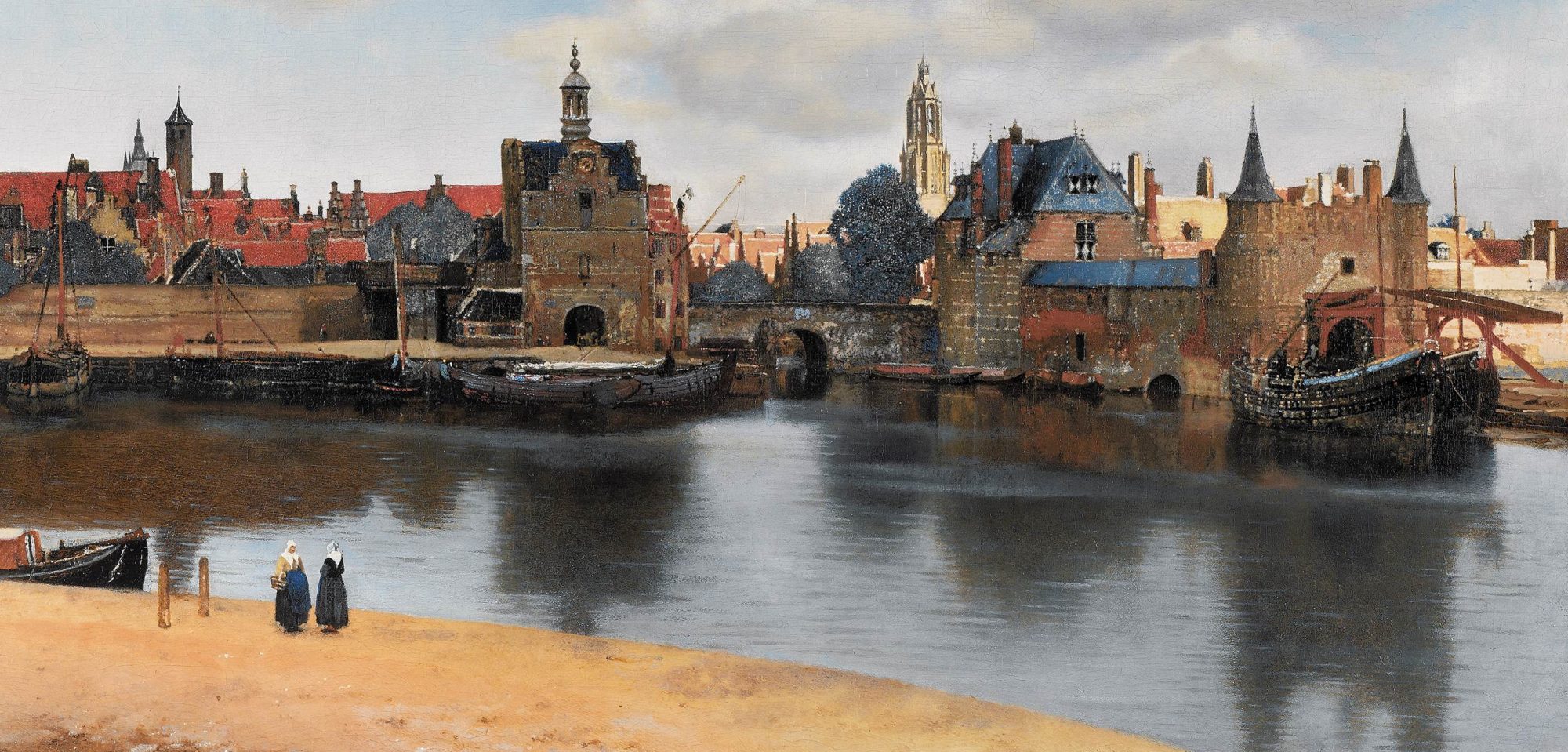Across time, space, and generations, the magic and spirit of Hans Hofmann, teacher to many, continues.
A composition of warm and vivid hues, geometric blocks of color, a surface that is rich in both visual and textural details, highlighting the materiality and thickness of the paint and the flatness of the canvas.
“Into Outer Space,” Hans Hofmann (oil on panel, 1957), at the Chrysler Museum of Art, Norfolk, VA (Gift of Walter P. Chrysler, Jr., 1971)
Action painter? Abstract expressionist?
“While critic Robert Coates first used the term Abstract Expressionism in his review of Hofmann’s 1946 solo exhibition at the Mortimer Brandt Gallery in New York, histories of postwar American art, have always focused on the youth, vitality, and uniquely American experiences of the generation of artists who matured in the 1940s.”
Lowery Stokes Sims, former Curator of 20th Century Art at The Metropolitan Museum of Art and organizer of the exhibition of 1999, “Hans Hofmann at the Metropolitan Museum of Art“.
Hofmann does not fit the narrative of such postwar histories. Born in 1880, Hofmann immigrated to the US from Germany in 1932 when in his fifties, developing a new style and creating a whole new body of work in his seventies and eighties.
During the course of his life Hofmann was a contemporary of and acquainted with Picasso, Braque, Matisse, and the Delaunays (both husband and wife). He had a lifelong interest in nature, science, music, poetry, and science. He crossed more significant barriers, national and aesthetic, than almost any other twentieth-century painter.
He was never a follower, nor an expressionist, fauvist, a cubist, or a surrealist.
“I am often asked how I approach my work,” Hofmann wrote in 1962 on the importance of the act of painting.
“Let me confess: I hold my mind and my work free from any association foreign to the act of painting. I am thoroughly inspired and agitated by the actions themselves which the development of painting continuously requires….This seems simple but it is actually the fruit of long research”
H. Hofmann, “Hans Hofmann on Art,” in Art Journal, Vol. 22, Spring 1963, p. 18; quoted in Lot Essay, Hans Hofmann, “Auxerre,” Lot 36B, Christie’s, Post-War and Contemporary Art Evening Sale, New York, 13 May 2015
William Chapin Seitz, the first scholar to receive a PhD from Princeton University in the field of modern art (it took him more than a year to convince the Princeton art history graduate committee that the work of living artists was a topic worthy of graduate study) and formerly Associate Curator of Painting and Sculpture Exhibitions at New York’s Museum of Modern Art, organized the 1963 MoMA exhibition, “Hans Hofmann”.
Dr. Seitz observes,
“When one looks back at the years after 1945, when the “New American Painting” was taking form, it is apparent that one of its aesthetic determinants was the desire felt by many artists to incorporate in their work tendencies of style and feeling previously thought to be contradictory. Both the temper of Hofmann’s mind and his supranational development led him in this direction.”
“It has been said that Hofmann is an “automatic” painter; he has also been called an “action painter” because of his direct enactment of emotional content. Yet his automatism has never been mere psychic catharsis, his activity is never purely physical, and his fury, like his delicate lyricism, is that of nature as well as himself. And even in the most passionate of his works the adjustment of formal relationships can be as precise as in the compositions of Mondrian or Malevich.”
“Hofmann admired Mondrian for the purity of his abstract structure. He admired Kandinsky — whom he once called an “anti-plastic” painter — for his automatism and fluid color.
“The architectural basis of his own painting derives from a study of Cezanne, and from cubism, yet (at least in his representational paintings).
“By synthesizing such diverse materials, Hofmann developed his own metier: the unhampered autonomy of lines and planes; the elevation of color to a primary means; the maintenance of clear “intervals” between color planes; the preservation of physical gestures in pigment. He cast aside the dross of systematic perspective, tonal modeling, literature, and illusionism.”
“Hans Hofmann with selected writings by the artist,” William Chapin Seitz, The Museum of Modern Art, 1963
Believing in the innate integrity of the pictorial space, Hofmann theorized the “push and pull” within a painting, describing how he used balance and contrast between colors and forms to create pictorial dynamism. Rejecting the traditional practice of creating depth through graduations of tone, Hofmann created space without denying the flatness of the picture’s surface.
Hofmann wrote in a late essay,
“Pictorial space is an aesthetically created space and is as such as real as nature. Its reality is based on the reality of the hidden inherent laws of the picture surface.”
H. Hoffman, quoted in S. Hunter, Hans Hofmann, New York, 1963, p. 44.
See:
“Hans Hofmann with selected writings by the artist,” William Chapin Seitz, The Museum of Modern Art, 1963.
“Hans Hofmann,” September 11 – December 1, 1963, The Museum of Modern Art
“William C. Seitz: Defending the Modern,” The Museum of Modern Art
“Hans Hofmann at the Metropolitan Museum of Art,” April 13 – October 17, 1999,
“Hans Hofmann at the Metropolitan Museum of Art,” exhibition catalogue, Lowery Stokes Sims, 1999.
“Post-War and Contemporary Art Evening Sale,” Lot 36B, Hans Hofmann’s “Auxerre,” Christie’s, New York, 13 May 2015, Lot Essay
“Post-War and Contemporary Art Evening Sale,” Lot 20B, Hans Hofmann’s “Lava,” Christie’s, New York, 15 November 2017, Lot Essay
#art #artmarket #arthistory #history #hanshofmann #science #physics #pictorialspace #modernart #postwarart #contemporaryart #picasso #braque #delaunay #matisse #mondrian #malevich #jacksonpollock #actionpainting #abstractexpressionism #met #metropolitanmuseumofart #moma #museumofmodernart #christie’s #germany #newyork #sanfrancisco #london #berlin #oslo #vienna #milan #dubai #hongkong #seoul #tokyo #architecture #design #luxury #urban #urbanliving #realestatedevelopment
